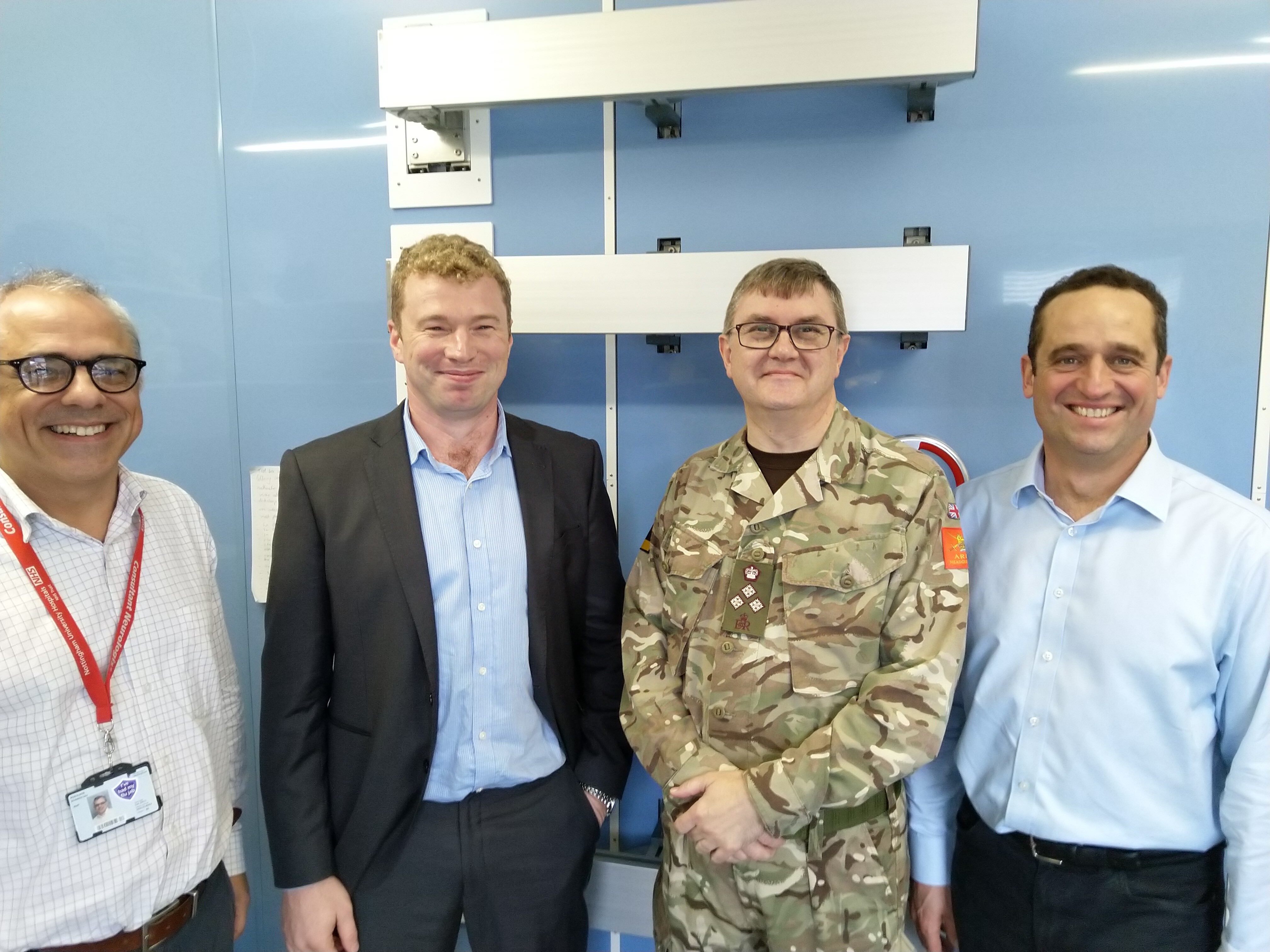
October 14, 2019, by jicke
Army visit explores use of MEG to diagnose brain injury
The University of Nottingham’s MEG team welcomed an important visitor on Friday as they were joined by the Head of Army Medical Services, Brigadier Tim Hodgetts CBE QHS.
Brigadier Hodgetts visited the facilities in the Sir Peter Mansfield imaging centre, including the newly installed wearable-MEG laboratory, to investigate the potential use of MEG in the diagnosis and management of mild traumatic brain injury.
Investigating MEG potential
Brain cells operate and communicate by producing electrical currents. These currents generate tiny magnetic fields that can be detected outside the head. MEG uses extremely sensitive detectors to measure those magnetic fields, providing a non-invasive means to measure, at a millisecond timescale, which parts of the brain are engaged when we undertake different tasks, and how those brain networks are affected by injury.
Professor Matthew Brookes led the visit alongside Consultant Neurologist Nikos Evangelou from Nottingham University Hospitals. Professor Brookes said: “We had extremely interesting discussions with the Brigadier and his team, and clearly our objectives are aligned in terms of investigating the potential of MEG for mTBI. Our team are in the early stages of an MRC funded study in this area, and we look forward to sharing the results of this study as it progresses.”
Brigadier Hodgetts said: “The military are very interested in the research of Professor Matt Brookes’ unit to use magnetoencephalography, or ‘MEG’, to diagnose traumatic brain injury. This not only has potential utility for future injured soldiers, but also for the wider civilian population. We will be watching for the results of this important work.”
No comments yet, fill out a comment to be the first

Leave a Reply